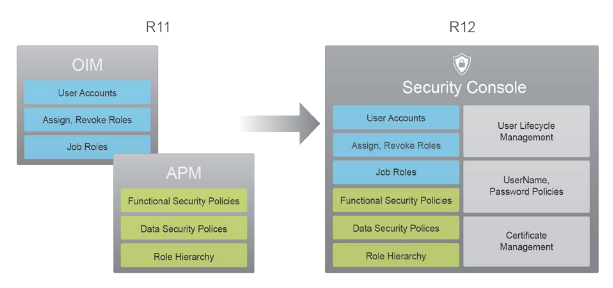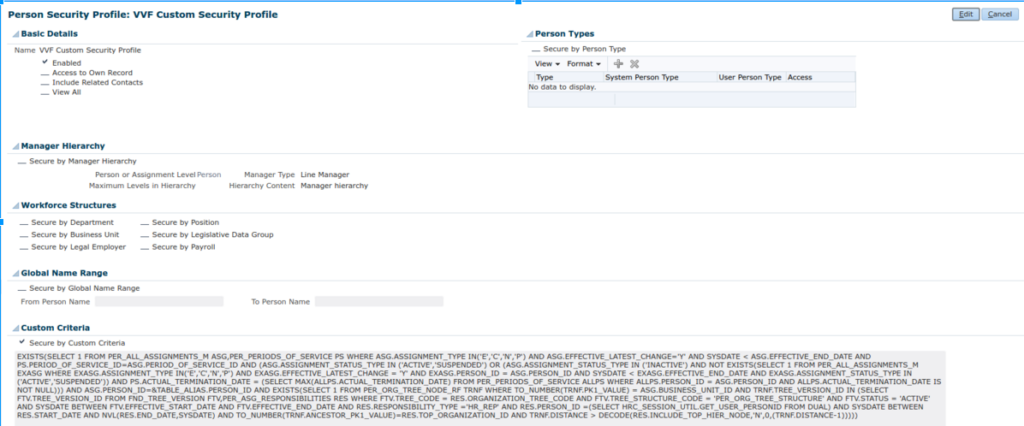
Oracle HCM Cloud Release 12: The Top 5 Most Valuable Features
Oracle has recently made an announcement of upcoming Oracle HCM Cloud Applications Release 12 on Oracle Cloud Release Readiness page (https://cloud.oracle.com/en_US/saasreadiness/hcm) and I am going to outline the most valuable features that were announced. This is only my own opinion and you are welcome to make any additional input. As we can see the major efforts have been made to improve primarily the technology components.
I am eager to see a new release by myself and as far as I know it is expected to be released in February 2017 but only The Lord and perhaps Oracle know the exact dates.
Top 5:
- Oracle Fusion Applications Security
Two releases ago Oracle development started the process of improvement and simplification security maintenance in Fusion Applications. Firstly they developed Security Console that significantly simplified administration of roles in Fusion Applications. In Release 12 Oracle Oracle is going to make Security Console as a single place for all tasks related to security maintenance including user life-cycle management, role definition, security policy management(both functional and data), role hierarchy maintenance, username and password policy administration, and certificate management. The console also enables users to simulate the effect of security changes, to run security reports, and download a connector for integration with Microsoft Active Directory. You won’t be needed to use APM and OIM anymore. This is absolutely the most valuable improvement and I put a maximum score.
- Spreadsheet Data Loading using HDL framework
Almost all my customers were complaining that it is impossible to use Spreadsheet Loaders along with HCM Data Loader and some of them even didn’t switch to HDL to be able to use old Spreadsheet Loaders technology.
As of Release 12 Oracle promises to provide support for spreadsheet data loading for all business objects that HCM Data Loader supports.
Use the predefined spreadsheet templates, copy and edit the templates, or create your own templates from scratch to include just the attributes needed for your use case. The spreadsheet templates are fully configurable. You can specify your own column order, column headings, help tips, attribute validation, and default values. You can enter your data in the spreadsheet generated from the template and upload it directly from there. Any errors are reported in the spreadsheet, where you can correct and reprocess failed records.
This is a very important improvement in my opinion.
- Person Security Profiles support Areas of Responsibility (AoR)
Ability to use AoRs in Security Profiles was introduced in previous releases in terms of dynamic security profiles. It is strongly recommended to use dynamic security profiles based on areas of responsibility to secure access to person records wherever it is possible. Dynamic security profiles can help you to avoid performance issues.
But the main disadvantage was that customer had to create an SQL predicate manually and put it into a Custom Criteria section. In Release 12 this disadvantage is going to be eliminated.
The Person Security Profiles pages are redesigned to accommodate areas of responsibility, and a Description field is added. A new Preview page is provided
where you can test the access provided by the security profile and review the SQL predicate generated by the selected security criteria. Related import and export services and audit of person security profiles support areas of responsibility. Existing person security profiles are unaffected by these enhancements.
- Role Provisioning Supports Areas of Responsibility (AoR)
In one of my posts I complained on lack of flexibility while you are defining conditions for auto provisioning rules and noted that it would be useful to add areas of responsibility as a condition as well.
As of Release 12 customers will be able to define conditions based on AoRs. Role mappings now include a Responsibility Type condition. The Autoprovision Roles for All Users process can now create requests to add and remove roles based on a user’s areas of responsibility.
- Connectors for external IDM providers
For Microsoft Active Directory (AD) and Oracle Identity Management (OIM), customers can download and install connectors that will automatically synchronize user account information between Oracle Fusion Applications and these IDM systems. As in Release 11, customers must continue to log a Service Request (SR) to set up federated Single Sign-On (SSO) between these systems. Once federation is enabled, the connectors will synchronize the information.
Release 12 also delivers a REST API based on the SCIM (System for Cross-Domain Identity Management) standard. Customers can use this API to create user accounts, modify user attributes (e.g. email), enable/disable users, and fetch user account and role information.
PS: ERPWebTutor team and I would like to wish You a Merry Christmas and a very happy and prosperous New Year
SY,
Volodymyr









0 responses on "Oracle HCM Cloud Release 12: The Top 5 Most Valuable Features"